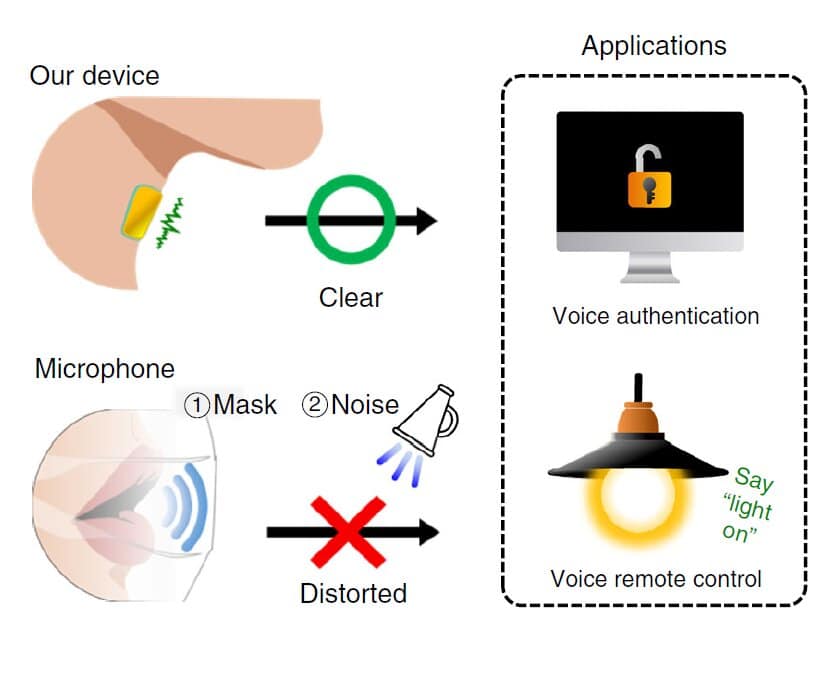In recent years voice recognition has begun to become a much more affordable as it can be easily found on mobile phones these days. However, it often bugs down or doesn’t work properly due to the presence of surrounding noise and other obstacles. This is because mobile phones use a microphone that can detect sound pressure for voice recognition.
Now, researchers at Pohang University of Science & Technology (POSTECH) have successfully developed a flexible and wearable vibration responsive sensor to recognize the user’s voice accurately. When attached to the neck, the sensor can precisely recognize voice through the vibration of the neck skin and is not affected by ambient noise or the volume of sound.
These skin-attachable sensors detect and recognize human voice by examining neck skin vibrations, which can be measured with several parameters, including velocity, displacement, and acceleration.

The conventional vibration sensors recognize voice through air vibration, and the sensitivity decreases due to mechanical resonance and damping effect. Therefore, they are not capable of measuring voices quantitatively. So, the ambient sound or obstacles such as mouth mask can affect its accuracy of voice recognition, and it cannot be used for security authentication.
The team showed that the voice pressure is proportional to the acceleration of neck skin vibration at various sound pressure levels from 40 to 70 dB SPL (Sound Pressure Level). Researchers developed this new wearable vibration sensor utilizing the acceleration of skin vibration.
The device consists of an ultrathin polymer film and a diaphragm with tiny holes. It can sense voice quantitively by measuring the acceleration of skin vibration. In a successful demonstration, the wearable sensor accurately recognizes voice without vibrational distortion even in the noisy environment and at a very low voice volume with a mouth mask worn.
The team, which includes Professor Kilwon Cho of Chemical Engineering and Professor Yoonyoung Chung of Electronic and Electric Engineering from POSTECH are planning to further extend the research to various voice-recognition applications such as electronic skin, human-machine interface, wearable vocal healthcare monitoring device.
“This research is very meaningful in a way that it developed a new voice-recognition system which can quantitively sense and analyze voice and is not affected by the surroundings. It took a step forward from the conventional voice-recognition system that could only recognize voice qualitatively,” said Professor Kilwon Cho, while explaining the meaning of this study in his interview.
Results of this study are published in Nature Communications.
